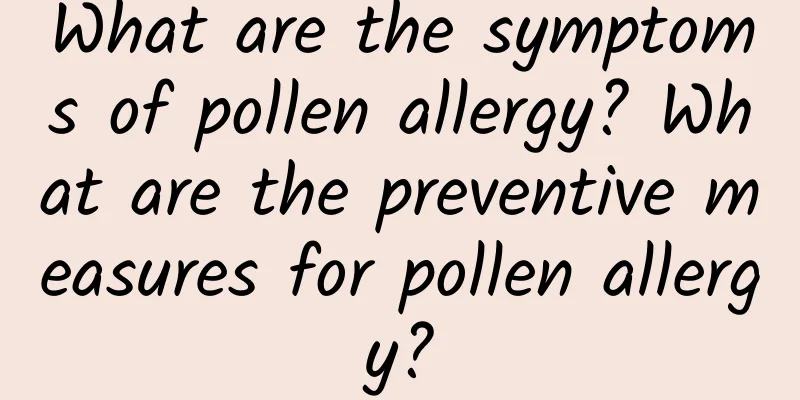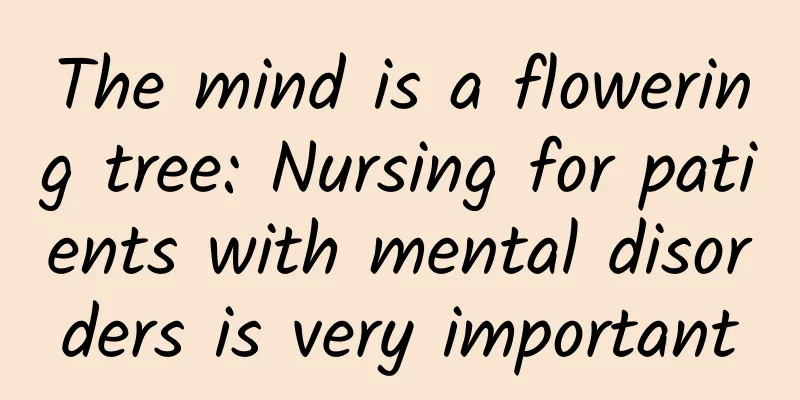What are the symptoms of pollen allergy? What are the preventive measures for pollen allergy?

|
In our lives, we encounter many surprising and happy things, but there are also many things that make people feel annoyed and uncomfortable. For example, for those who are relatively sensitive, pollen allergy is really a headache. Encyclopedia Knowledge Network tries to share little knowledge in life with you, so that your life will be sweeter and happier! We will accompany you all the way and work hard to move forward. Contents of this article 1. What are the symptoms of pollen allergy? 2. What are the preventive measures for pollen allergy? 3. Dietary considerations for those with pollen allergies 1What are the symptoms of pollen allergy1. Pollen rhinitis, the main symptoms are nasal itching, sneezing, runny nose, nasal congestion, and difficulty breathing. 2. Pollen asthma: the main symptoms are paroxysmal cough, dyspnea, white foamy mucus, sudden asthma attacks and gradual worsening. After recovery, there is no difference from normal people. 3. Pollen conjunctivitis is mainly manifested by itchy eyes, swollen eyelids, and often accompanied by watery or purulent mucus secretions. 2What are the preventive measures for pollen allergy1. Preventive measures (1) Avoid going out in the evening during the pollen season when the pollen count is highest. Most pollen floats in the air during the day, but in the evening the wind slows down and the pollen settles below 2 meters. It can be inhaled into the respiratory tract, fall into the eyelids, or adhere to the skin, causing allergies. (2) When pollen counts are high, try to stay home. From July to September each year, grasses bloom and tons of pollen float in the air, which can easily trigger allergies. (3) Close the windows when you go to bed at night to prevent pollen from drifting into the room. (4) During the pollen spreading season, people who are allergic to pollen should avoid drying clothes and bed sheets outdoors and use a dryer to dry clothes to reduce the chance of contact with pollen. (5) Wear a pollen protection mask and glasses when going out, and keep the car windows closed when driving. (6) Patients who have the conditions can go to other places and come back after the pollen season is over. 2. Symptomatic treatment (1) Relieve symptoms, including sneezing, runny nose, tearing, and nasal congestion. (2) For patients with moderate or severe disease, the focus should be on controlling inflammation. (3) Adverse reactions to treatment should not affect or limit the patient's daily life. (4) The medication regimen should be as simple as possible to help patients complete treatment smoothly. (5) The drug must not react adversely with other drugs the patient is taking. 3. Desensitization treatment Those who have the conditions can receive desensitization treatment (immunotherapy), twice a week, for a course of 3-5 years. However, at the current medical level, there is no specific drug to treat allergic rhinitis in the world. 3Dietary considerations for pollen allergies1. Suitable 1. Foods rich in probiotics such as yogurt A study in the British Journal of Dermatology showed that pregnant women who drank yogurt containing probiotics during pregnancy and after delivery could reduce the risk of eczema in their babies and reduce the risk of other allergic symptoms in their babies. 2. Foods rich in vitamin C, such as kiwi fruit and fresh dates Vitamin C helps fight histamine allergic reactions such as itching and urticaria. Carolyn Dean, medical director of the American Nutrition Association, said that vitamin C releases histamine by indirectly inhibiting the function of inflammatory cells. Foods rich in vitamin C, such as strawberries, kiwis, and green leafy vegetables, should be eaten frequently in spring. 3. Foods rich in flavonoids such as apples and onions Studies have shown that flavonoids are particularly effective in reducing inflammation and inhibiting allergic reactions. Foods rich in flavonoids include apples, onions, red wine, and tea. 4. Foods rich in magnesium, such as almonds and cashews A study by Brigham Young University in the United States showed that animals that lack magnesium have higher levels of histamine in their blood after exposure to allergens than those that have sufficient magnesium. In addition to almonds and cashews, green leafy vegetables, kelp and other foods are also rich in magnesium. 5. Foods rich in omega-3 fatty acids, such as salmon Omega 3 fatty acids have been shown to have anti-inflammatory effects and help reduce allergies. In addition to deep-sea fish such as salmon, walnuts and flax seeds are also foods with high omega 3 fatty acid content. 2. Taboo 1. Allergic food Pollen patients need to avoid foods that are easy to be allergic to, such as fish, shrimp, crab, eggs, mango, beef, mutton, strawberry, pineapple, onion, coriander, etc., so as not to aggravate the allergic symptoms. In addition, they should be careful about eating wild vegetables, because eating wild vegetables can cause sensitivity to ultraviolet rays, make the skin red and swollen, and aggravate the symptoms of pollen allergies. 2. Spicy food Spicy and irritating foods such as chili, pepper, garlic, mustard, ginger, etc. These foods contain alkaline ingredients, which can easily aggravate the patient's skin lesions, cause blood vessel dilation, skin redness, and aggravate pollen allergies. Therefore, people who are allergic to pollen should avoid eating them. 3. Hair-inducing foods Patients who are allergic to pollen should try to avoid eating irritating foods, including: shrimp, crab, oysters, clams, turtles, hairtail, eels, pork heads, roosters, lamb, leeks, mushrooms, bamboo shoots, shiitake mushrooms, etc., because these foods are easy to generate wind heat and cause the allergic symptoms to worsen. 4. High-protein foods If you consume more high-protein, high-calorie foods such as eggs and meat products, it will lead to hyperactivity of the body's ability to produce antibodies, so when encountering antigens such as pollen, it is more likely to have an allergic reaction. Therefore, friends who are allergic to pollen should try to eat less high-protein, high-calorie foods, such as milk, eggs, beans, squid, beef, mutton, dog meat and other high-protein, high-calorie foods. 5. Some fruits and vegetables that cause cross-allergies with pollen Some pollens are closely related to food allergies, such as birch pollen and apples, cherries, and peaches; mugwort pollen and celery and chili powder; ragweed pollen and cantaloupe, bananas, and watermelons. In daily life, we often encounter patients with oral food allergies. Such patients often experience symptoms such as swelling of the oral mucosa, edema of the throat and digestive tract, and wheezing. In severe cases, they may even suffer from anaphylactic shock. This may be because specific pollens and certain food ingredients have cross-antigens (allergens). Here we remind people who are allergic to pollen to be cautious about fruits and vegetables that can cause food allergies. |
<<: A Talk on Early Screening for Lung Cancer (Part 3)
>>: A long talk about early screening for lung cancer (final chapter)
Recommend
What are the small bumps next to the nipples?
Nowadays, women's health is really a high-pro...
Does an “anti-inflammatory diet” really work? Are foods that claim to be “anti-inflammatory” just a waste of money?
The May Day holiday is over. Many people enjoyed ...
Symptoms before menstruation
Women have a few days of discomfort every month, ...
How long can you live in the second half of breast cancer
Every woman may suffer from breast disease due to...
What should women do if their teeth are yellow?
Every woman hopes that her teeth can be whiter an...
7 eating habits that cancer cells love most. Check to see if you are one of them.
How do you get cancer? This is a question that ma...
What brand of mobile phone does the heroine of I Want to See You use? The same model and price of Huang Yuxuan's mobile phone
The phone and phone case used by Huang Yuxuan, th...
What does menstrual bleeding mean?
As the saying goes, women are a kind of wonderful...
Why is there lower abdominal pain and anal swelling?
Lower abdominal pain and a feeling of heaviness a...
What should I pay attention to when buying an Apple phone? How to set the screen to always stay on on an Apple phone
I believe many people will have this feeling. Eve...
What should I do if I have red bumps on my pubic hair?
If people don't take good care of their pubic...
How long does it take to get pregnant?
Preparing for pregnancy is a normal process for c...
5 simple habits that can make your brain smarter
5 simple habits that can make your brain smarter ...
Women are afraid of both cold and heat
Generally speaking, being afraid of cold in winte...
Is it good to stimulate the breasts frequently?
Nowadays, many novices will often stimulate their...









